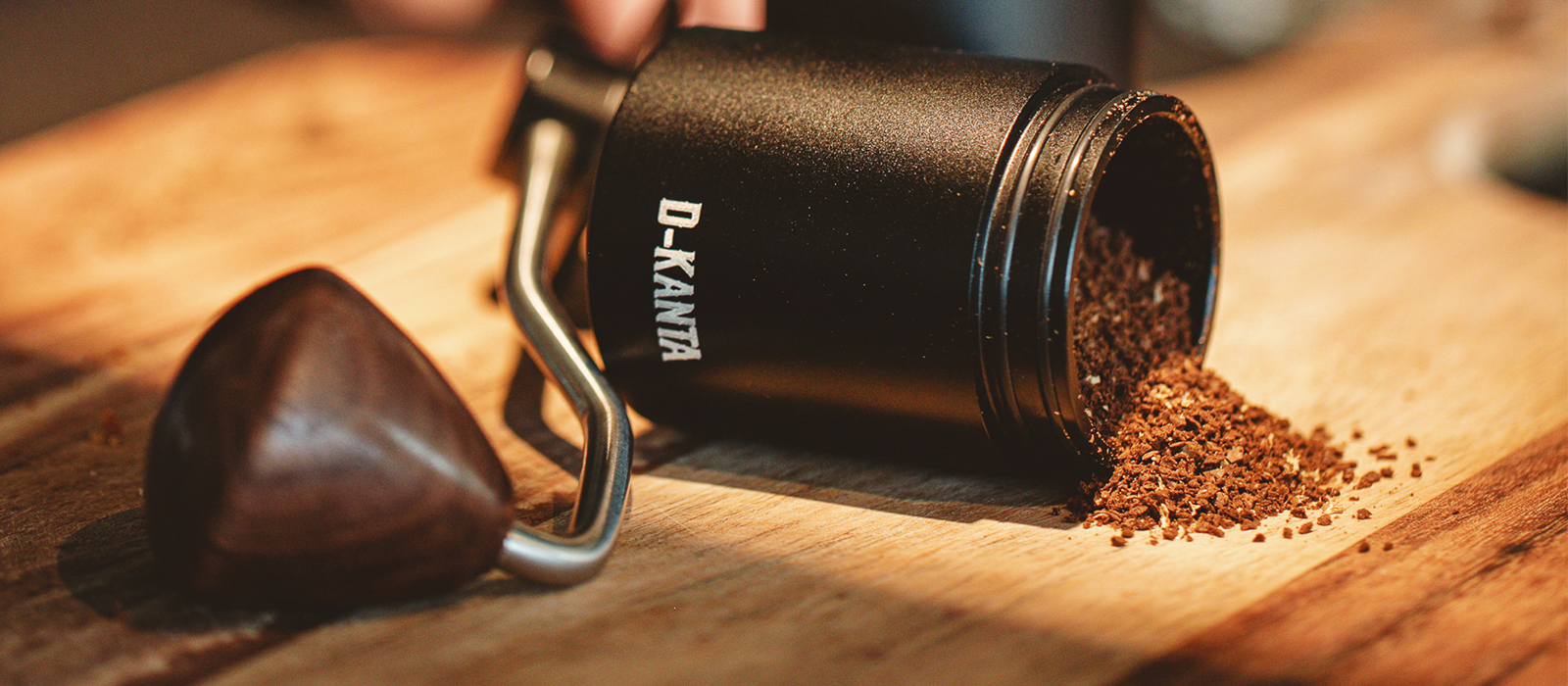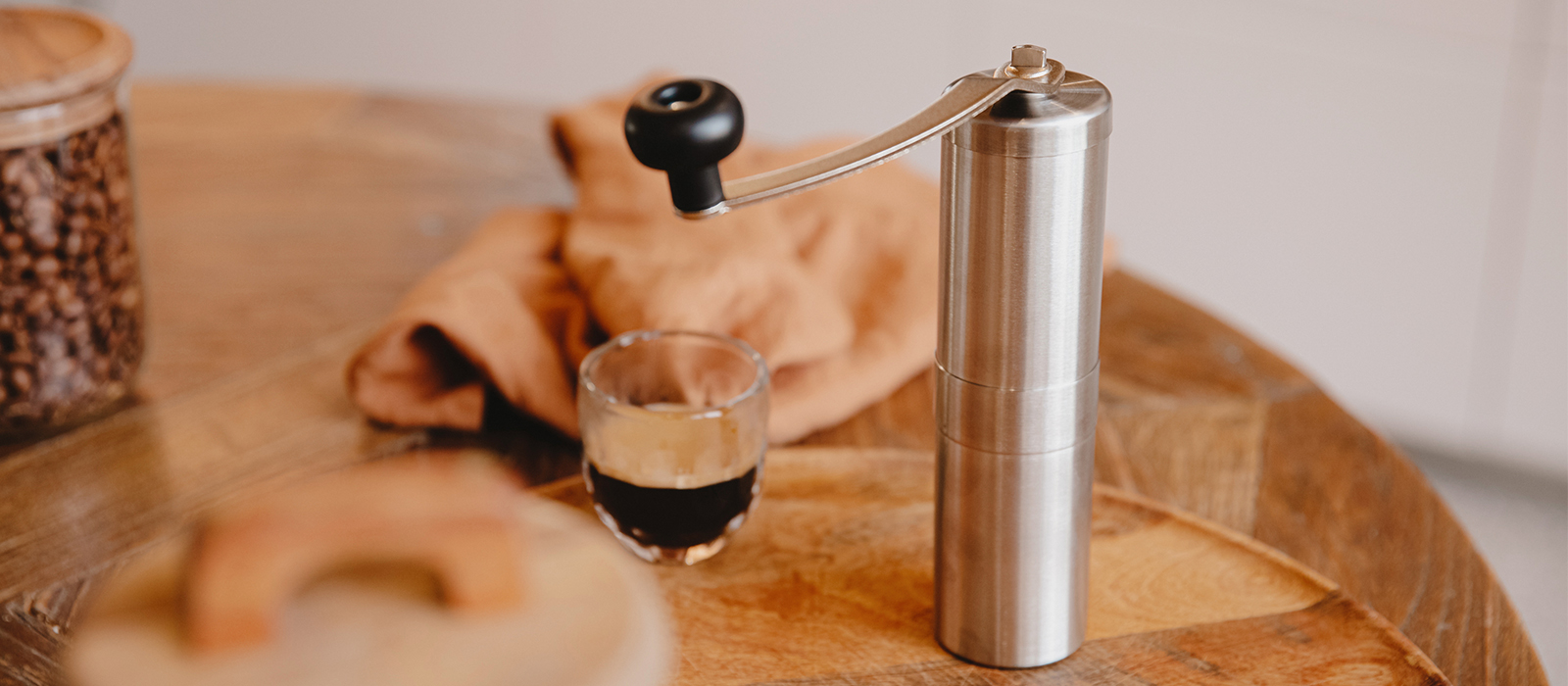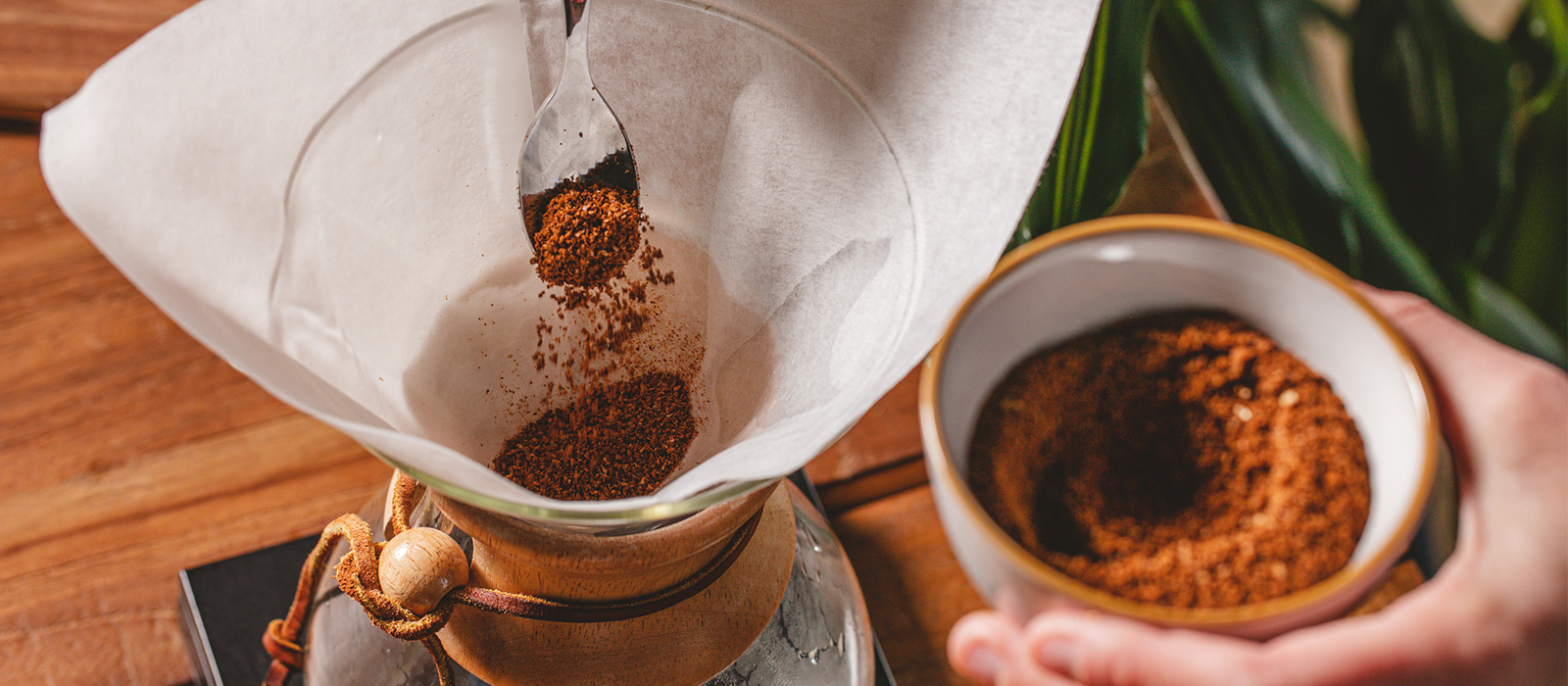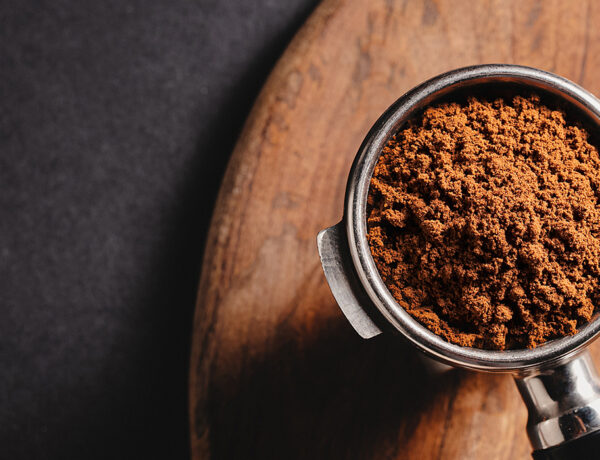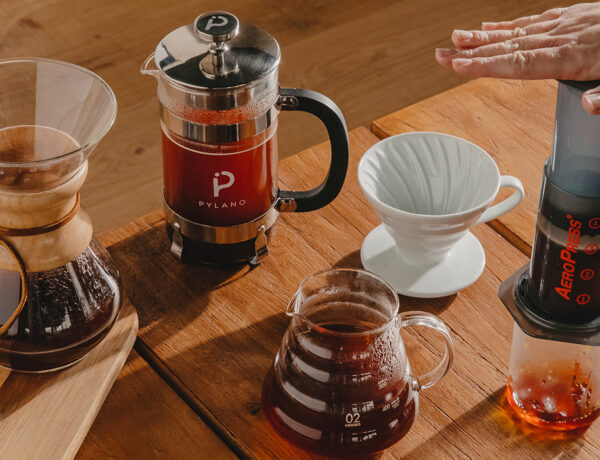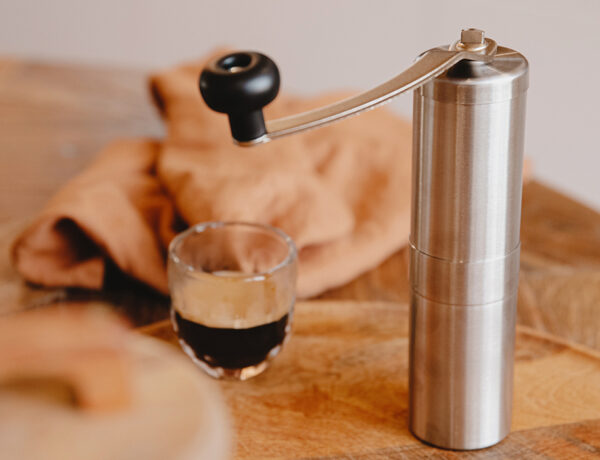
- Home
- Why You Should Freshly Grind Your Coffee And How To Do It
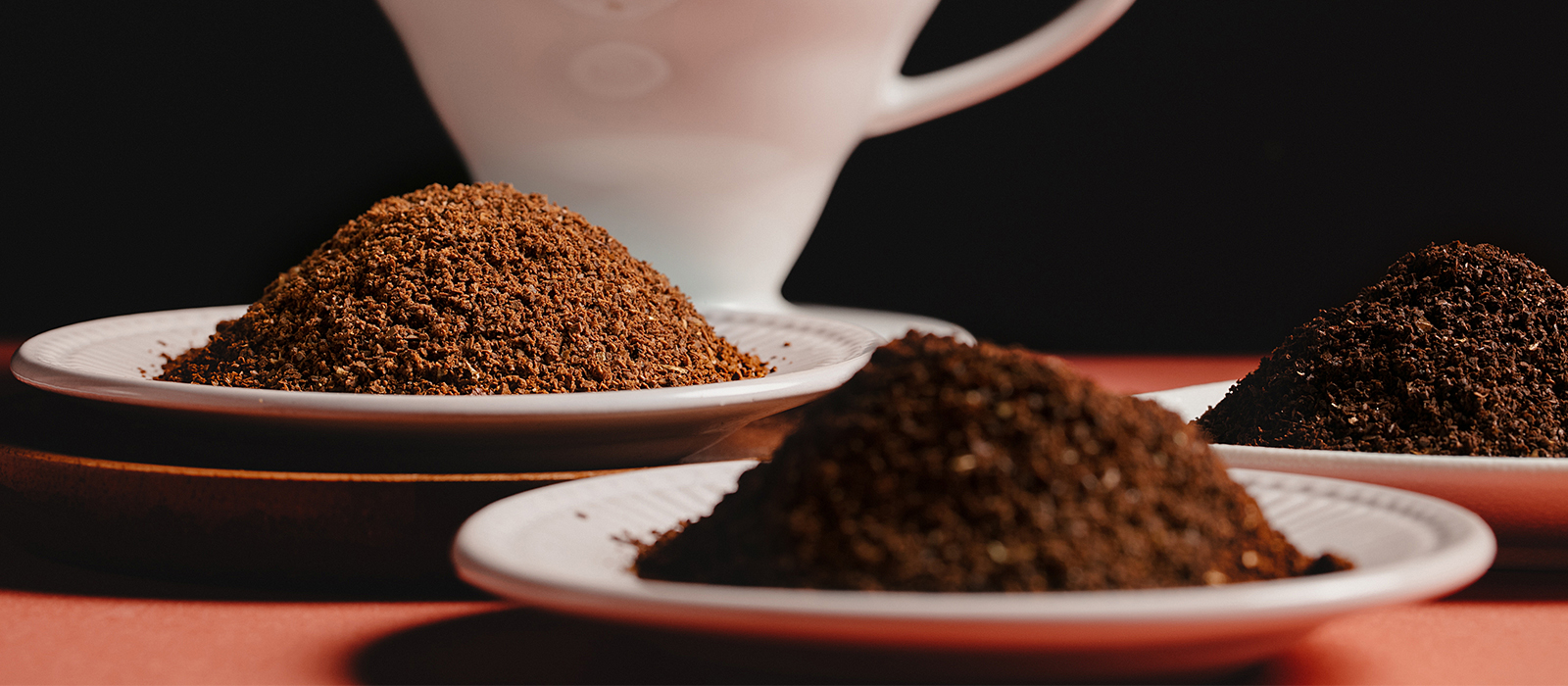
Why You Should Freshly Grind Your Coffee And How To Do It
Written by Alice
There are many secrets to an amazing cup of coffee, and the finest connoisseurs know that one such secret is freshly ground coffee. This is the key to unlocking the unparalleled richness and aroma of the best coffee beans. There are many ways to grind coffee, from manual grinders to electric grinders. Let’s take a look at how to grind coffee beans, how exactly coffee grinders work, why you should consider getting one if you don’t already have one, and how to use it.
What is a coffee grinder?
If you want to take your coffee experience to the next level, a decent coffee grinder is probably THE best thing to get. Simply put, it’s a machine that breaks down whole coffee beans into smaller pieces that can be used for making coffee. The fundamental principle is simple yet key to a delicious cup of coffee — the beans are crushed to expose more surface area, which facilitates the extraction of flavours during the brewing process.
There are two broad categories of grinders: blade and burr. Blade grinders work like mini food processors, using spinning blades to chop the beans. This is a quick and affordable option, but it can produce grounds with varying sizes, leading to uneven extraction and an imbalanced cup.
Burr grinders, on the other hand, employ two rotating surfaces (burrs) that crush the beans between them. Burr grinders offer adjustable settings to achieve various grind sizes, making them suitable for different brewing methods, from French Press to espresso.
Any coffee producer or expert will tell you that burr grinders are the go-to and will offer the most luxurious coffee experience.
What impact will the grinder have on my coffee?
There are several ways in which the physical act of grinding beans affects the quality of the resulting coffee.
The first is heat. As the coffee beans are ground, the act of grinding produces heat. The beans and ground coffee will absorb this heat, which can have a detrimental effect on the final product. Grinding large quantities results in increased heat transfer, as the grinding burrs and surrounding components become hotter. So be aware that grinding too many beans at once will generate more heat and ultimately impact the flavour and quality of your brewed coffee or espresso.
The second consideration is the size of the grind – which is how fine or how coarse your coffee is ground. The size of you grind you need will depend on how you intend to brew your coffee. For example, you will need very coarse coffee for a French Press, but a very fine grind for Moka Pots or espresso machines. Be sure to take into account what size grind you need when choosing your grinder.
What are the different kinds of coffee grinders?
Now that you know the grinding basics, let’s take a look at your options. Each type offers unique advantages depending on your needs and preferences. Remember that for each type, you’ll find both blade and burr grinders.
- Manual coffee grinders: As their name suggests, these require you to manually spin or hand-crank the grinder. These come in many shapes and sizes and are perfect for coffee purists. Cranking by hand delivers a meditative experience and precise grind control, but requires some elbow grease.
- Electric coffee grinders: Electric grinders offer quick, convenient and effortless grinding, often with adjustable settings for different brewing methods. Once again these can be handheld or require some counter-space but there are options galore, to fit your specific needs.
- Espresso grinders: These specialized grinders produce the ultra-fine grounds needed for creating rich, full-bodied espresso. So if an espresso is your go-to, this could be the perfect option for you.
- Travel grinders: Compact and portable, these grinders are ideal for coffee adventures on the go, ensuring fresh grounds wherever you wander.
Can you grind coffee beans in a blender?
Yes and no. Blenders can mimic blade grinders, producing inconsistent grounds that compromise flavour. The result will usually be quite coarse, which is fine if you have a French Press, but not so much if you’re a Moka Pot enthusiast. What is more, if your coffee beans are light roast, they can be quite hard so be careful not to damage your blender. If it’s a dark roast, they will be much more brittle and suitable for a blender.
All in all, we’d say that if you’re in a bind and that’s all you have, you should be okay to use a blender to grind your coffee as a one-off. But if you are looking to regularly grind your beans, be sure to pick up a grinder asap.
Why use a coffee grinder
Before answering the question “how to grind coffee beans”, let’s consider why you should grind your coffee beans yourself. There are many benefits attributed to using a coffee grinder, here are just a few of them:
- Freshness: This argument alone should suffice to convince you that you need to be grinding your coffee. Whole coffee beans retain their freshness and flavour longer than pre-ground coffee. Freshly ground coffee releases more aromatic oils, resulting in a richer and more complex flavour profile. What is more, the increased surface area exposed during grinding allows for better extraction of flavours, leading to a more satisfying cup of coffee.
- Control over grind size: Different brewing methods require specific grind sizes to achieve optimal extraction. Whether you prefer French Press, pour-over, or espresso, having the ability to adjust the grind size allows you to customize your coffee to suit your taste preferences.
- Cost savings: While investing in a quality coffee grinder may seem like an upfront expense, it can ultimately save you money in the long run. Buying whole beans in bulk and grinding them as needed is more cost-effective than purchasing pre-ground coffee, which also tends to degrade faster and lose its freshness. All in all, it’s a win-win situation.
In short, using a coffee grinder will help you take your coffee brewing experience to the next level and discover the full potential of freshly ground beans.
How to use a coffee grinder
Last but not least, let’s look at how to grind coffee beans. Using a coffee grinder is a relatively straightforward process that only requires a few simple steps. The steps will depend on the type of grinder you purchase, and each grinder will come with its own set of instructions. However, here are a few of the basics you should know.
Choose the right grind size
As previously mentioned, the grind size depends on your preferred brewing method. Refer to your grinder’s manual or experiment with different settings to find the ideal grind size for your preferred brewing method.
Measure the coffee beans and load them into the grinder
Before grinding, measure out the desired amount of coffee beans based on your brewing ratio. Open the chamber of your grinder and pour in the measured coffee beans. Less is more, so avoid overfilling the grinder to prevent uneven grinding or clogging.
Grind the coffee
Close the chamber of the grinder and activate the grinding mechanism. For manual grinders, turn the hand crank in a steady and consistent motion until all the beans are ground. For electric grinders, press the power button and allow the grinder to operate until the beans are evenly ground to the desired consistency.
Check the grind consistency
Once grinding is complete, open the grinder and inspect the coffee grounds for uniformity. Adjust the grind settings if necessary to achieve the desired consistency for optimal extraction.
Transfer the grounds
Once grinding is complete, and after checking that the coffee is ground uniformly, transfer the coffee grounds to your brewing device to preserve freshness and flavour. Avoid leaving the grounds in the grinder’s chamber for an extended period, as they may become stale or lose their aroma.
Clean the grinder
Maintenance equals longevity, so be sure to clean your grinder regularly. Remove any residual coffee grounds from the grinder’s burrs or blades using a brush or damp cloth. Refer to your grinder’s manual for specific cleaning instructions and recommended maintenance practices.
Ready to take the plunge? Check out our expert selection of manual coffee grinders to be sure to make the best possible choice.
Discover all of our articles
